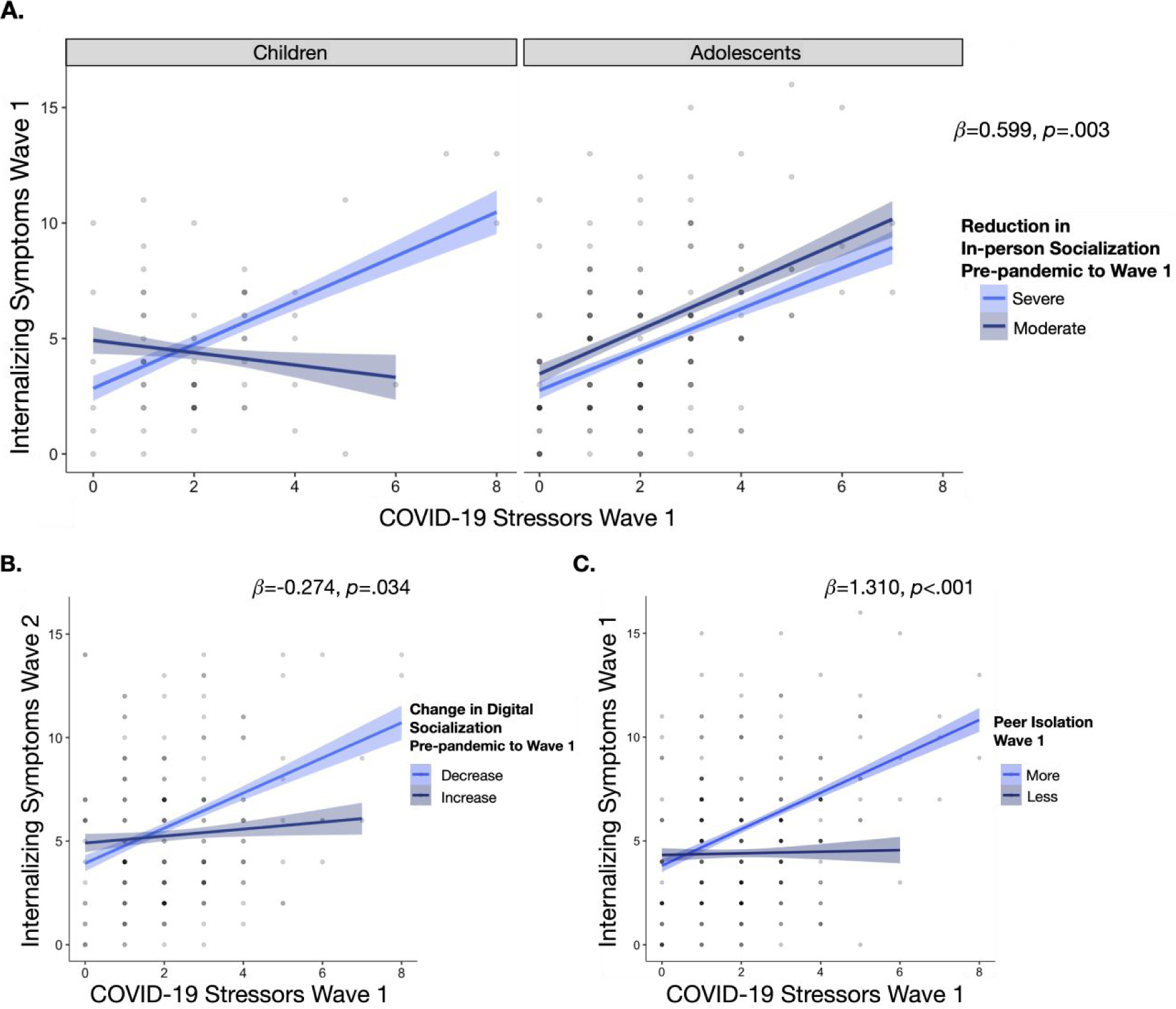Figure 4.

Social experiences moderated the association between pandemic-related stressors and psychopathology. A. Children with more severe reductions of in-person socialization during initial stay-at-home orders showed a positive association between pandemic-related stressors with internalizing symptoms, but this pattern was absent in children with only moderate reduction of in-person socialization. Adolescents showed this strong relationship, regardless of the extent of change in in-person socialization. B. Youth who decreased digital socialization from pre-pandemic levels showed a positive relationship between pandemic-related stressors and internalizing and externalizing symptoms six months later, while this relationship was absent in those who reported increased digital socialization. C. Youth who reported greater isolation showed a positive relationship between pandemic-related stressors and concurrent internalizing and externalizing symptoms, while this relationship was absent in those who reported low peer isolation. Shaded region indicates SE.
